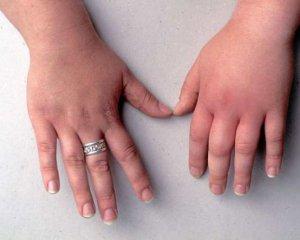Insects bee and wasp - differences: photo and description 5 main features
City dwellers do not often meet with various insects and can easily confuse the similar-looking wasp and bee. But, experienced summer residents and people living outside the city know that these are two completely different types of insects and there are many differences between them.
Content
Origin of wasps and bees
The main difference between these insects from a scientific point of view is their classification. Bees are representatives of the Hymenoptera order, but wasps are the collective name for all stinging stalked-bellied insects that do not belong to either ants or bees.
Wasps are something of a related species between ants and bees, so their body looks similar to ants, and the striped color resembles that of a bee.
Body structure and appearance of wasps and bees
Despite the similarities, wasps and bees differ significantly from each other in appearance. If you look closely at these insects, you can see a number of major differences.
The body of the wasp is more brightly colored than that of the bee. Usually these are clear, contrasting stripes of bright yellow and black. Sometimes, in addition to the stripes, small spots of white or brown color appear in the color of the wasps. The body color of the bee is softer and smoother, and most often it is an alternation of golden yellow and black stripes.
All limbs and body of the bee are covered with many fine hairs. This is due to the fact that they are insect pollinators. The presence of such hairs on the body of the bee contributes to the capture of more pollen. In the wasp, the limbs and abdomen are smooth and have a characteristic glossy sheen.
The body structure of wasps is more like ants. They have thin limbs and an elongated, graceful body. Bees, in contrast, look more "chubby". Their abdomen and limbs are more rounded and short. In addition, the bees look more voluminous due to the presence of many villi on the body.
This part of the body in wasps and bees also has some differences. This cannot be seen with the naked eye, but the differences in the mouthparts are associated with the different way of life of insects. The growth of the wasp is more adapted to grinding plant fibers and cutting off small pieces of food of animal origin for feeding the larvae. The bee's mouth is more suitable for collecting nectar, as this is their main activity and a staple of their diet.
Lifestyle of wasps and bees
There are also significant differences in lifestyle.
| Wasp | Bee |
|---|---|
| Wasps, unlike bees, cannot produce wax or honey. They build their houses from found materials and various wastes, which are most often found in landfills. Due to visiting such places, they can be carriers of dangerous infections. | Bees always live in colonies and adhere to a strict hierarchy. These insects have developed an incredibly strong sense of family. Worker bees work continuously to provide the entire hive with nectar. Sometimes for the sake of nectar they can fly up to 5-8 km. |
| In order to feed their carnivorous offspring, wasps can kill other insects. They relentlessly attack their prey and inject a paralysis-causing toxin into their body. | Thanks to their diligence, bees collect a huge amount of nectar. Insects process it and get many useful products, such as wax, honey and propolis. All these products are widely used by people in cooking and medicine, and the bees themselves build honeycombs from wax of their own production. |
Behavior of wasps and bees
A wasp does not need allies or a special reason to sting an opponent even 1000 times larger than herself.
Toxicity of wasp and bee venom

Consequences of a wasp sting.
wasp venom unlike bee, it is much more toxic and causes severe allergic reactions in people much more often. In addition, due to the fact that wasps often look at landfills, they can infect their prey with various infections.
Pain from a wasp sting lasts from several hours to several days, while with a bee sting, the pain usually subsides immediately after the sting is removed. Also, bee venom contains an acid that can be neutralized with ordinary soap.
Conclusion
Wasps and bees may look similar at first glance, but in reality they are two completely opposite species of insects. Bees are not aggressive, they work diligently and bring great benefits to humans. Wasps are rather dangerous and unpleasant creatures, but despite this they are also an important component of the ecosystem.
Previous